plumsolly
Well-known member
I got a pair of these off of Craigslist recently. Mine don't actually say Thompson anywhere on them, but I have seen them referenced this way. I guess a guy who had owned the seller's house before him was a studio owner in california and had left a few items along with the house. I also got a really nice boom and a couple of other items. This guy was apparently a tape machine repairman - he has a ton of NOS ampex motors and other parts. Here are some pictures of one of the mics:

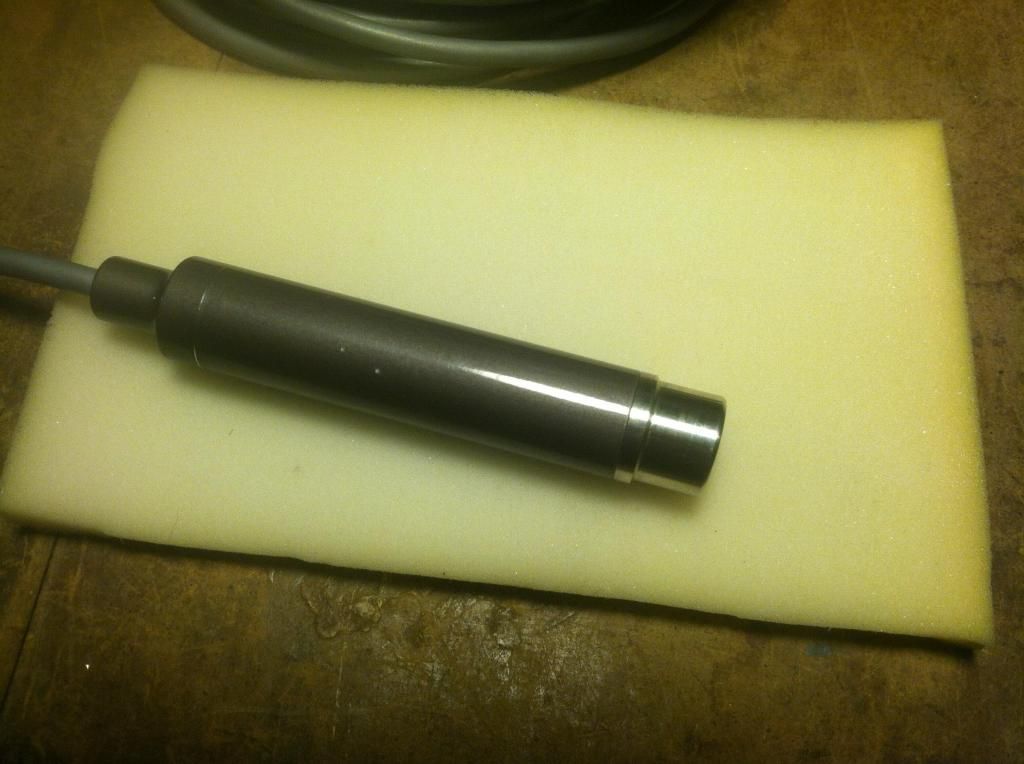
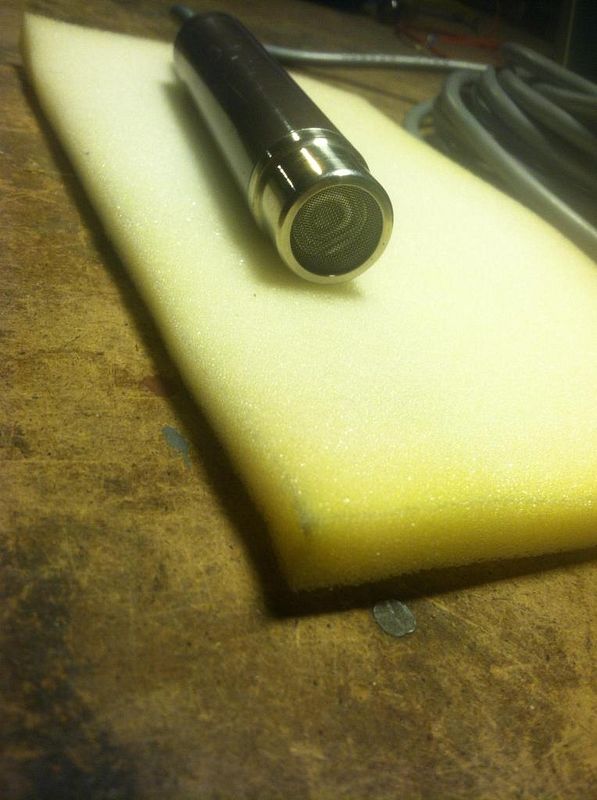
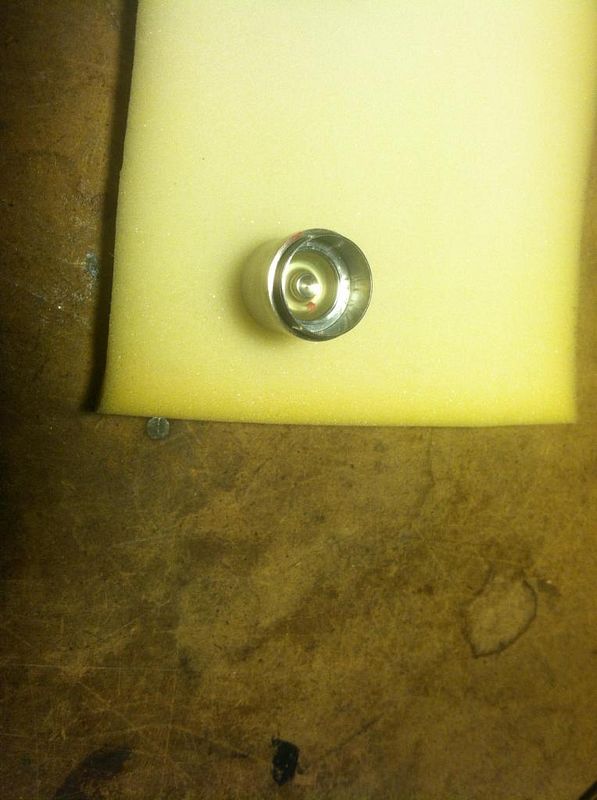
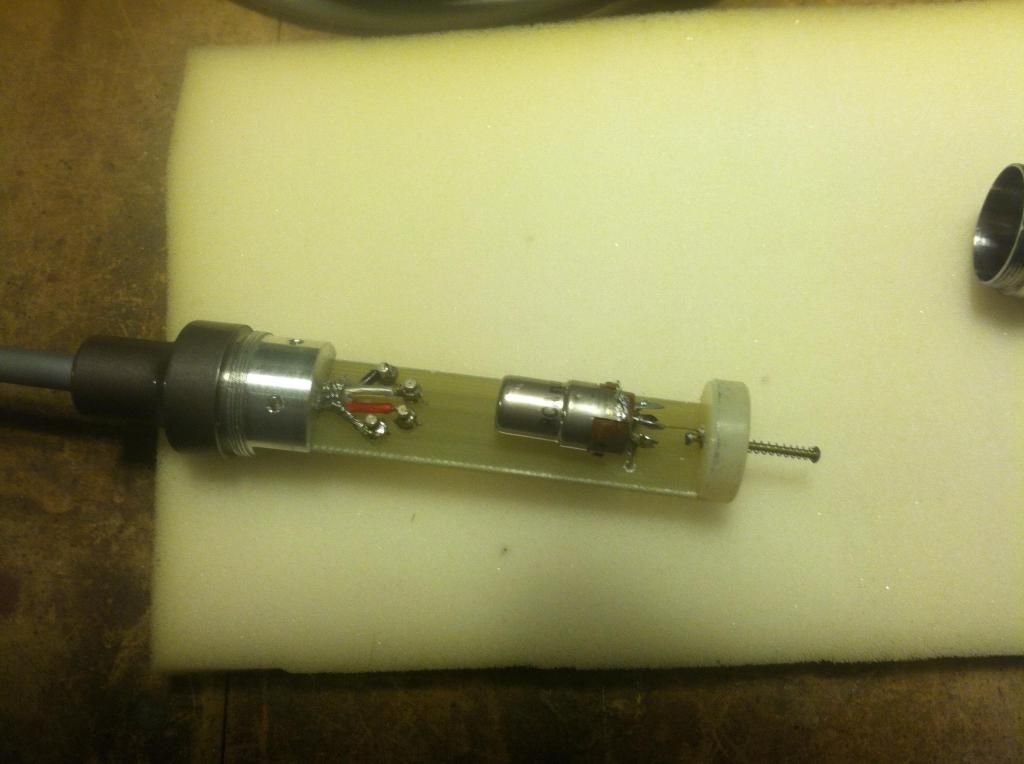
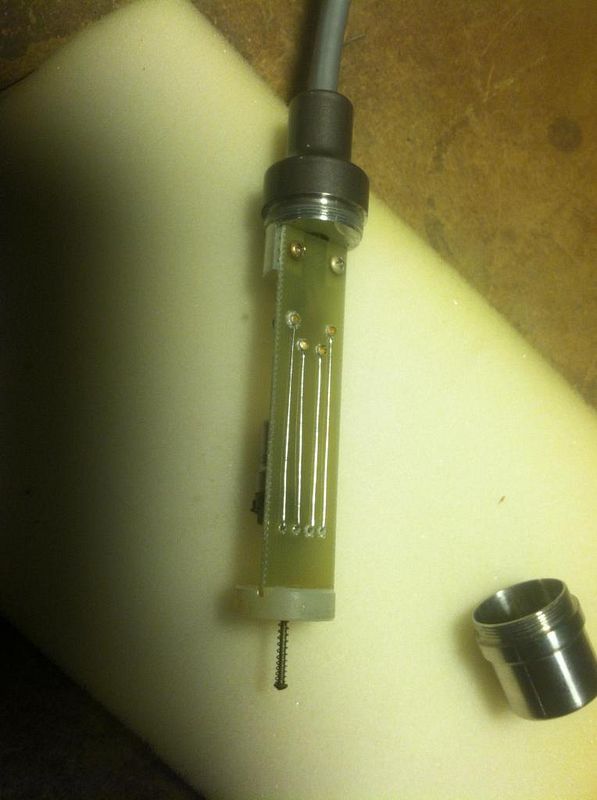
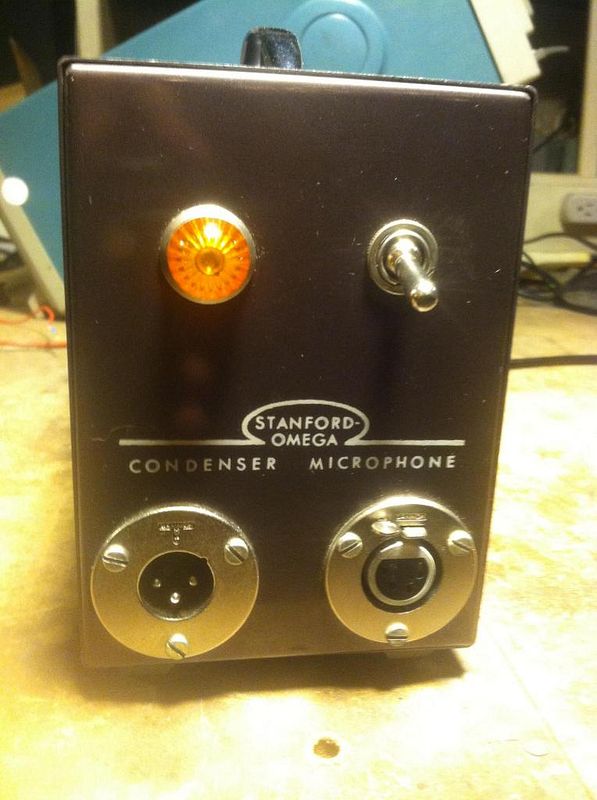
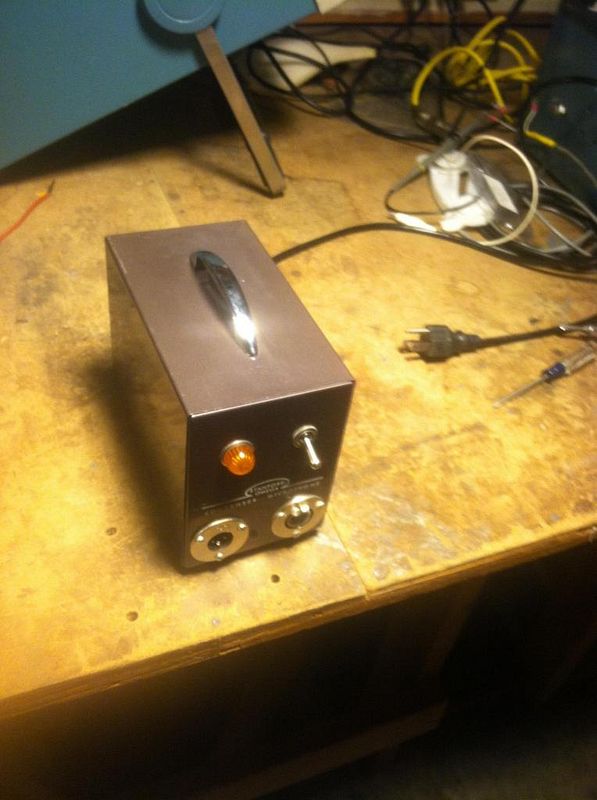
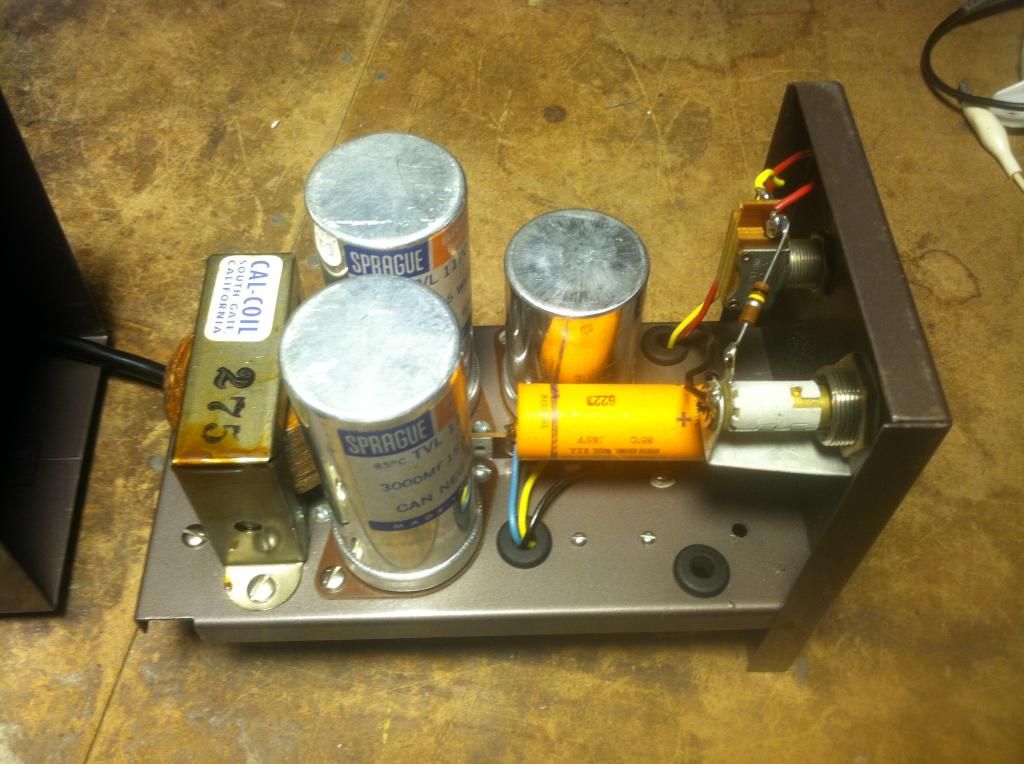
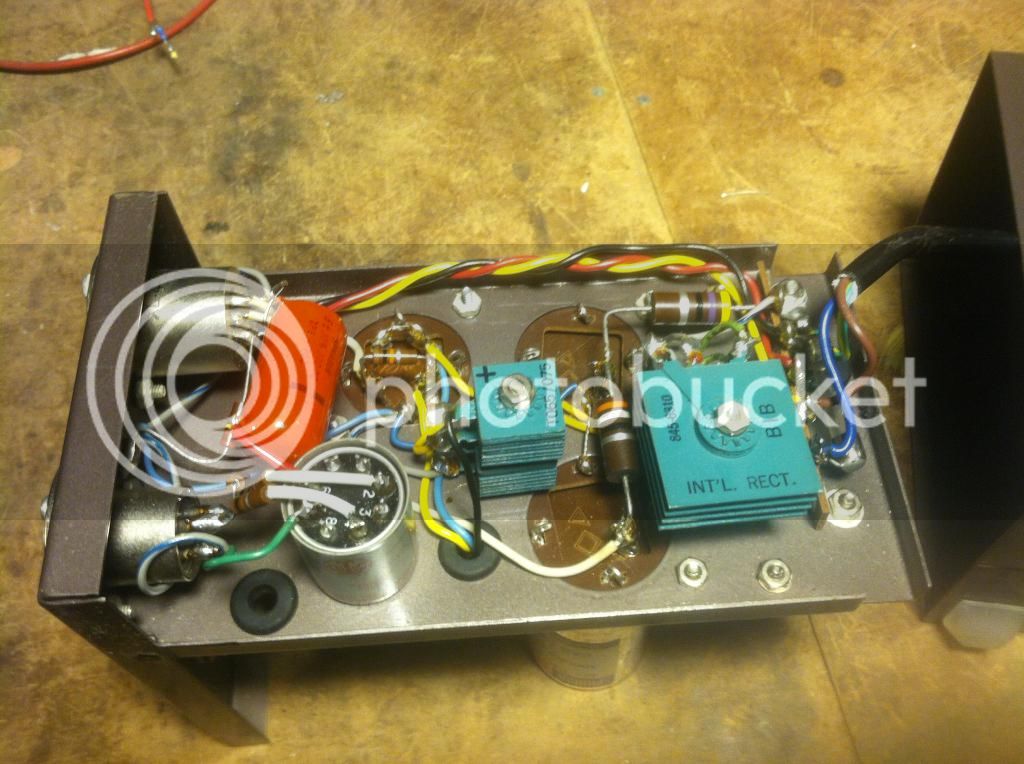
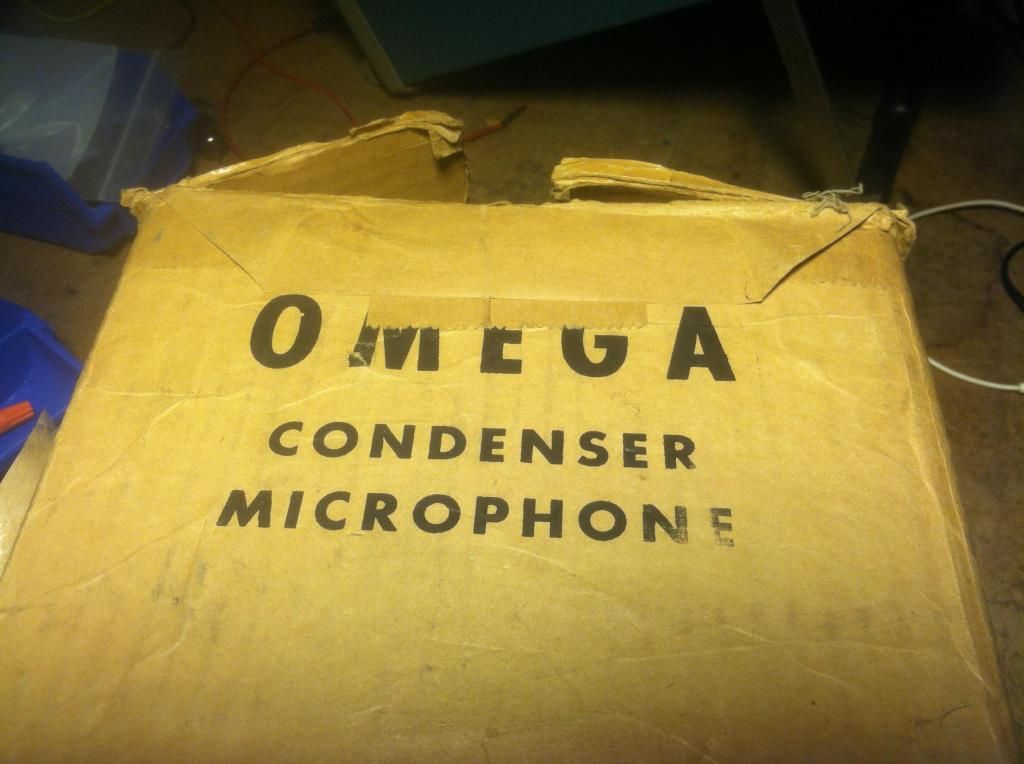
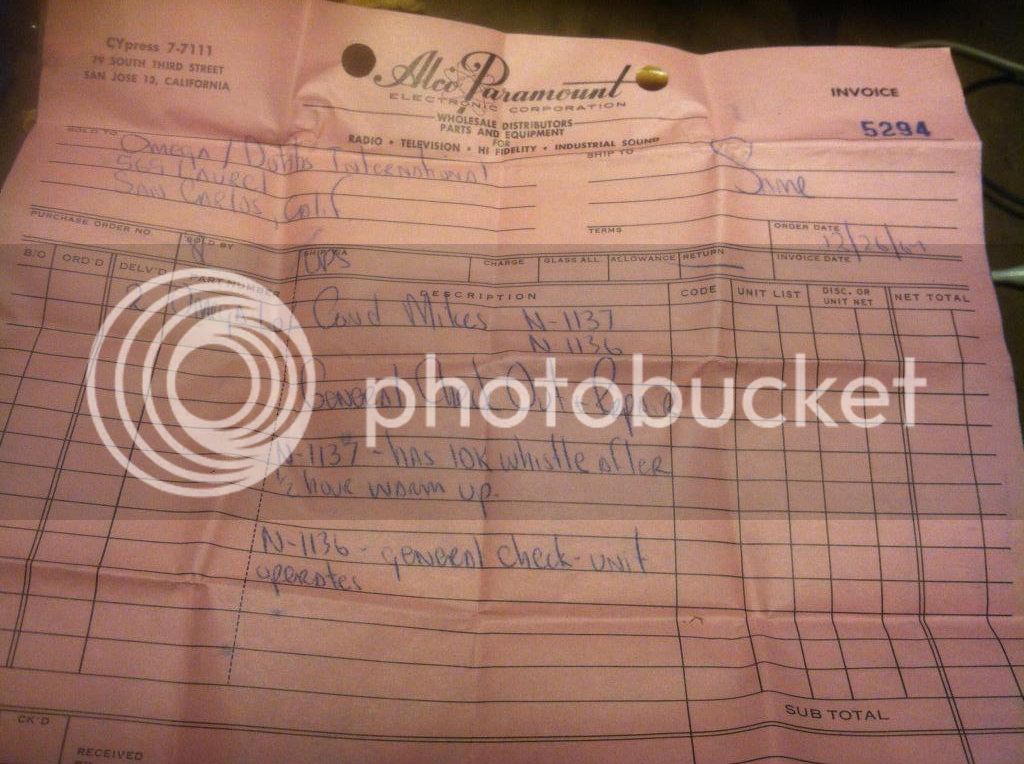
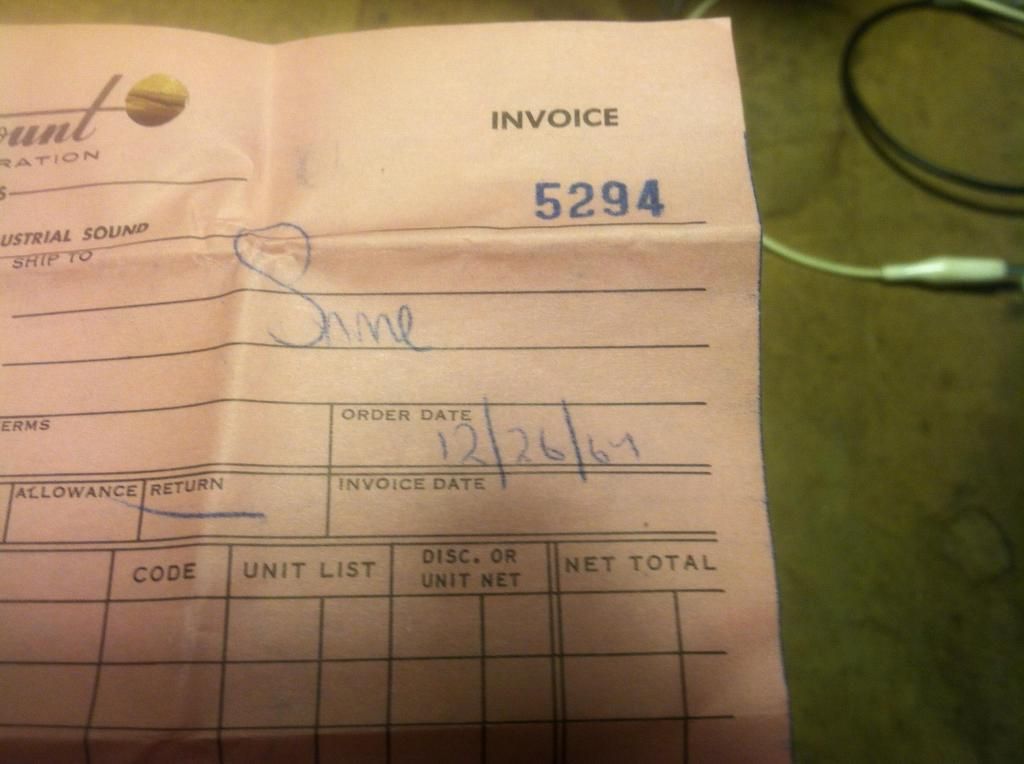
In the last few photos, you can see the original box and a packing slip from when they were sent off for repair in 1967. Interestingly the customer on the invoice, as well as the shipping address on the boxes is Omega/Dobbs International which I can only assume is the company that made, or at least marketed them. Seems unusual that they would send their own mics off for repair. It seems like the company that performed the repairs, Alco Paramount Electronics Corporation, still exists.
Notice the cool shockmount - (the rubber is still good).
The mic is all aluminum.
I traced out the schematic:
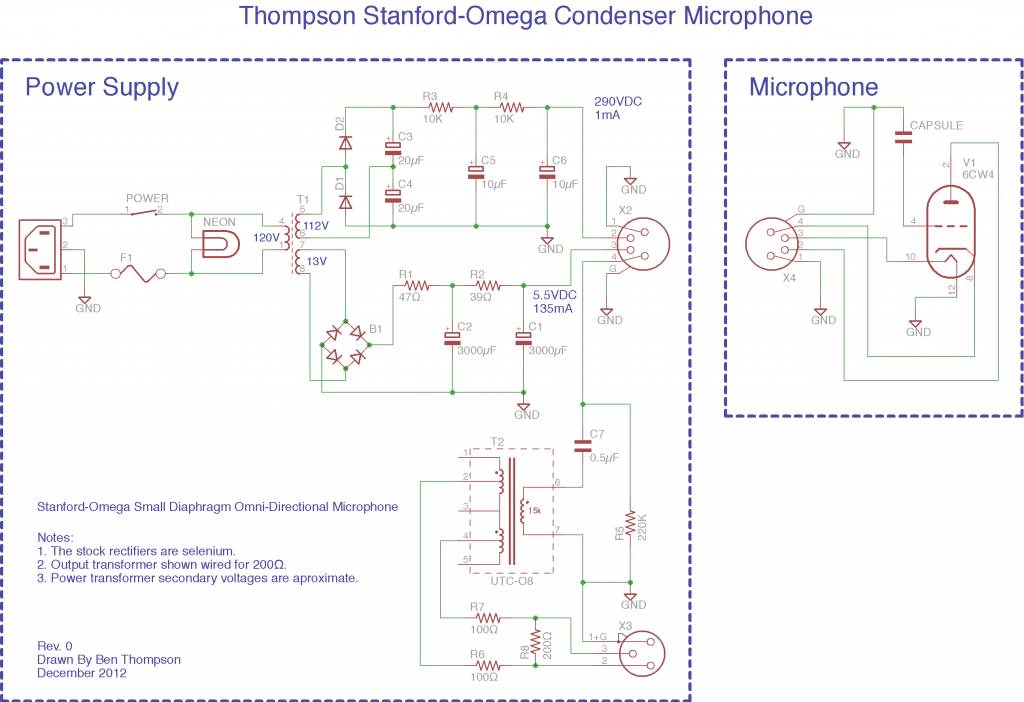
It uses a 6CW4 Nuvistor as a cathode-follower. The arrangement is almost exactly like the small diaphragm Royer mod. The B+ seems pretty high. I measure ~221V at the cathode - would that make the grid voltage/capsule bias ~219V? The 6CW4 is only rated for a 100V differential between cathode and heater. It seems to me this arrangement pushes more than double that. Any thoughts?
As far as sound, my initial impression is that they are very bright, but I have not had the opportunity to really put them to the test yet.
As far as modifications, if I determine the sound is not what I want it to be, there are a couple things I could try, though I have a feeling the sound is going to be dominated by the capsule, so there may not be much I can do to affect it. It would be easy enough to change the tube. The 5840, which is used in the Royer mod and, apparently, in earlier versions of this mic, would be easy enough to put in there, but I am guessing that the type of tube doesn't have a huge impact on the sound in a cathode-follower circuit? The 5840 is rated for a 200V differential between cathode and heater, though, which might make it a better choice.
I will post my impressions and discoveries as things progress.
Ben













In the last few photos, you can see the original box and a packing slip from when they were sent off for repair in 1967. Interestingly the customer on the invoice, as well as the shipping address on the boxes is Omega/Dobbs International which I can only assume is the company that made, or at least marketed them. Seems unusual that they would send their own mics off for repair. It seems like the company that performed the repairs, Alco Paramount Electronics Corporation, still exists.
Notice the cool shockmount - (the rubber is still good).
The mic is all aluminum.
I traced out the schematic:

It uses a 6CW4 Nuvistor as a cathode-follower. The arrangement is almost exactly like the small diaphragm Royer mod. The B+ seems pretty high. I measure ~221V at the cathode - would that make the grid voltage/capsule bias ~219V? The 6CW4 is only rated for a 100V differential between cathode and heater. It seems to me this arrangement pushes more than double that. Any thoughts?
As far as sound, my initial impression is that they are very bright, but I have not had the opportunity to really put them to the test yet.
As far as modifications, if I determine the sound is not what I want it to be, there are a couple things I could try, though I have a feeling the sound is going to be dominated by the capsule, so there may not be much I can do to affect it. It would be easy enough to change the tube. The 5840, which is used in the Royer mod and, apparently, in earlier versions of this mic, would be easy enough to put in there, but I am guessing that the type of tube doesn't have a huge impact on the sound in a cathode-follower circuit? The 5840 is rated for a 200V differential between cathode and heater, though, which might make it a better choice.
I will post my impressions and discoveries as things progress.
Ben


